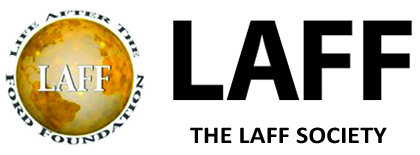CLIPPINGS
|
Steven Sanderson on Forests, Peat and Climate Change
From newsblaze.com Steven E. Sanderson, President and CEO of the Wildlife Conservation Society, is available for commentary on current efforts at the Copenhagen climate talks to finalize a deal to compensate countries for protecting forests and peatlands. Sanderson can also comment at on avoided deforestation programs (such as REDD projects) and protecting peat soils in locations such as Chile's Karukinka National Park. In a recently published article appearing in the latest edition of Foreign Affairs, Sanderson writes: "Tropical forests represent a vast sink for carbon, and their destruction may account for 20 percent of annual CO2 emissions. Peatlands lock up one-third of global soil carbon in three percent of global territory, representing a cost-effective area for climate change mitigation - yet they are suffering losses from fire, drainage, and agricultural conversion and, consequently, emitting up to two gigatons of CO2 per year." In a recent edition of Americas Quarterly, Sanderson writes: "The Western Amazon, Chilean old-growth forests, Maya Biosphere Reserve, Sub-Antarctic nothofagus forest, and many other important forest patches offer an investment opportunity to the world, even though they are not currently high-risk: set aside intact carbon-rich forests that are not presently at risk, thereby saving the world an additional expenditure in its CO2 budget and saving the biodiversity that depends on those forests.....The nations of Latin America have the institutional, intellectual and political infrastructure to deliver on this idea, and it would be a powerful contribution to conservation and the mitigation of climate change." He further notes: "The same should be done for the Patagonian peatlands of Argentina and Chile, the southernmost peatlands in the world and among the richest in the world. Now, they are at risk from exploitation for energy and horticulture. Such high latitude peatlands are of growing importance in the world of climate change and hydrology, as they are unique, unusually rich in carbon, and among the most vulnerable to use....If they can be protected, the long-term benefits for biodiversity and carbon storage will be immense." Sanderson adds: "WCS has an extraordinary opportunity to create a Carbon for Conservation strategy that marries the conservation of biodiversity with climate mitigation and adaptation and a meaningful benefit for the poorest rural residents - our partners in the remote settings where we work. Our advantage lies in the fact that we manage about 200 million acres around the world, about 70 percent of which is in forest. A rough estimate of the above-ground vegetation CO2 in the forest landscapes we manage is ~31B tons." Steven E. Sanderson has been President and Chief Executive Officer of the Wildlife Conservation Society in New York since 2001. Previously, he was Dean of Emory College, Faculty of Arts and Sciences, at Emory University in Atlanta. He received a Ph.D. in Political Science from Stanford University in 1978. Over the past thirty years, he has studied the politics of rural poverty, biodiversity conservation and environmental change. As a member of the faculty of the University of Florida from 1979 to 1997, he directed the Tropical Conservation and Development Program and chaired the Department of Political Science. A former Fulbright Scholar in Mexico (1976-77), in the mid-1980s Sanderson held a Rockefeller Foundation International Relations Fellowship in Mexico and a Council on Foreign Relations International Affairs Fellowship in the Office of the U.S. Trade Representative in Washington, D.C. From 1985 to 1987, he served as Ford Foundation Program Officer in Brazil, where he designed and implemented the Foundation's Amazon conservation and rural poverty program. |
DISCLAIMER: The views expressed in these pages are the views of the authors and do not necessarily reflect the views of the LAFF Society.

